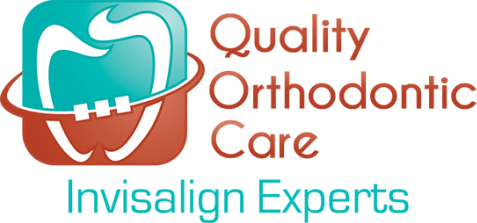When you or your child wear braces, you want to make sure you take good care of your teeth while they are in braces so that when they come off, your smile can be healthy and beautiful! You already know about needing to brush thoroughly daily to get rid of food particles and bacterial plaque, but now more than ever, you also need to floss! Flossing, however, must be done carefully so as not to damage the components of the brace. We have an easy solution to help keep your teeth clean and your braces safe!
Avoid Gum Disease and Decalcification
Your smile in braces is vulnerable to oral health issues. It can include gingivitis (gum disease) and decalcification (white spots on your teeth), which can cause other serious problems if you aren’t careful. That’s why we stress daily oral hygiene care, particularly if you are wearing braces! You don’t want to end up with gingivitis where your gums look red, swollen, and shiny from bleeding easily. Getting rid of plaque prevents your gums from being irritated and infected. But it’s not just your gums that can have problems with poor oral hygiene in braces. Your tooth enamel can become decalcified, leaving white spots when your braces come off. That’s because plaque creates harmful oral acids when you eat or drink something, damaging tooth enamel.
Water Flossing to the Rescue
Water flossers operate by way of a water stream, which you manually direct from a handheld device to clean in between the tooth crevices and braces parts. Water flossers are also called powered interdental cleaners, dental water jets and an oral irrigator. No matter what you call them, they have many advantages!
- Ease of use: You don’t have to manually work the water flosser to clean around your teeth and gum line. Point the sprayer tip at the parts of your braces while the water flosser emits the stream in steady pulses as you direct it around your teeth, gum line and braces hardware.
Safe to use: It can be daunting to floss around braces without worrying about breaking something, but, unlike regular flossing tools, water flossers are gentle enough to be safe around braces hardware without damaging or loosening braces brackets or wires.
Easy on the gums: If you have used flossing tape, strings, or picks, you might have noticed bleeding or inflammation around your gums from the pressure. Water flossers eliminate that threat, so both your teeth, gums, and braces are thoroughly cleaned. While traditional flossing tools can damage gums (and even braces), a water flosser is gentle around your oral tissues and hardware.
User-friendly for adults and kids: Whether you are an adult who has arthritis in the hand or carpal tunnel in your wrist or find maneuvering most flossing tools difficult, water flossers are an easy fix coming to your rescue! They can be used by anyone who has manual dexterity issues as long as you can hold the handle and point the tip at the area you are trying to clean.
They are a high-end flossing tool: Traditional flossers can still miss getting rid of oral debris, including harmful bacteria and stray bits of food, especially in the areas above and below your gum line. Flossing can easily clean your braces to prevent cavities and gum disease.
Traditional flossing tools can damage oral appliances: Like braces, other flossing tools can get stuck and cause problems around crowns, fillings, bridges, and dental implants. Water flossers are safer to use around them all!
Faster than other flossing methods: Without careful maneuvering around braces parts, water flossers can get into the tiniest areas and handily get rid of dental plaque and food gunk.
Call Today!
We are excited to straighten your teeth and encourage you to maintain their health and beauty by consistently brushing and flossing every day! A good toothbrush, as well as a water flosser, are two indispensable tools in your oral health toolbox! Call us to learn more about cleaning your braces and answer your orthodontic questions!





